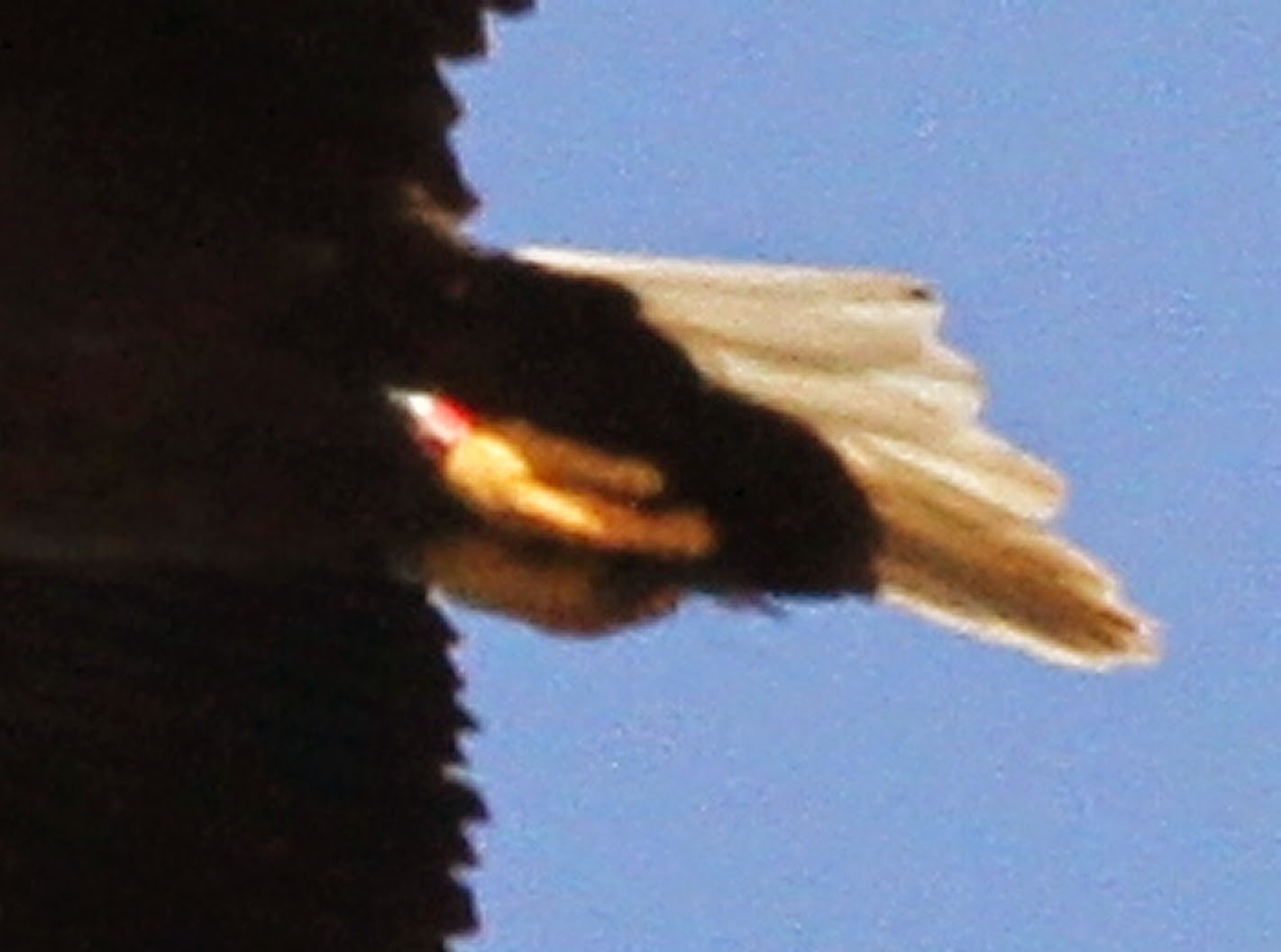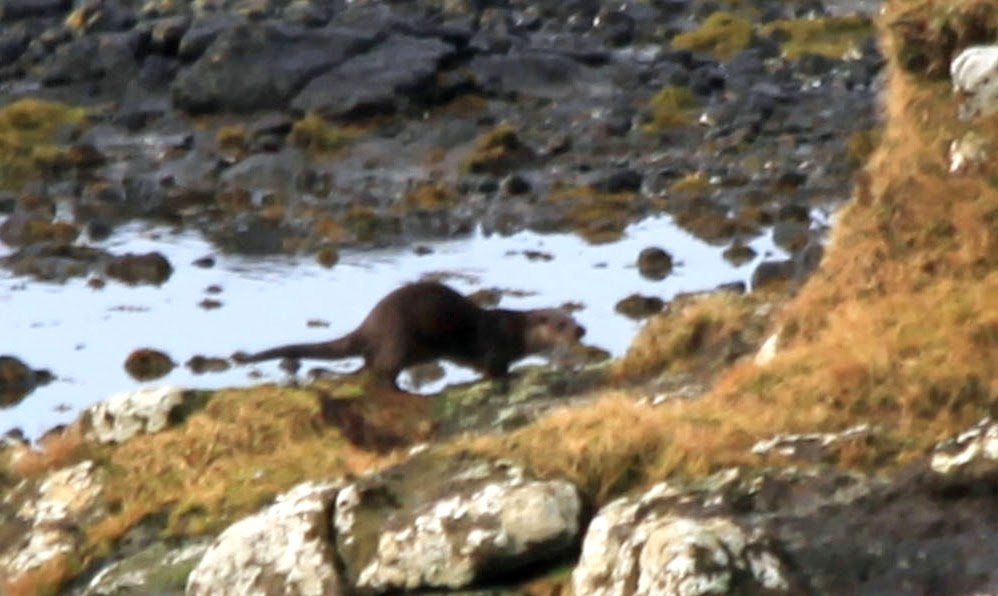February 2014
A Eurasian Otter (Lutra lutra) on the shore of Loch Dunvegan photographed by Bruce.
1st
Winter returns, coating the south Trotternish Hills with castor sugar.
4th
A Raven (Corvus corax) and Ben Tianavaig. Skeabost is Raven City.
What do you do when a gang of bovine ne'er-do-wells blocks your only way home?
Stroll on with a jaunty, nonchalant air, in the secure knowledge that these beasts will recognize one born in the year of the ox and greet him as one of their own.
See here Jimme, it's horn-up-the-sporran time fer youz!
Finally I remembered my Vegan Society membership card. A quick flash of that while holding my thumb strategically over the expiry date, "It's okay guys, I'm on your side", and we were all good pals.
7th
The soil and the water in it are heated by solar infrared radiation which increases the vapour pressure of the water, allowing more of the H2O molecules to escape into the atmosphere as a gas. As the air is thinner than the soil and therefore doesn't absorb as much solar radiation, it is cooler. The gaseous H2O molecules therefore lose vibrational energy by collisional transfer to other air molecules and begin to coalesce (hydrogen bond with each other) around tiny particles of dust, forming water droplets (mist). Well, maybe that's what happens.
12th
Some time in February
A very rare American Black Duck (Anas rubripes) spotted by Bruce at Strontian, near Loch Sunart on the west Scottish mainland. This duck has apparently been hanging around in Scotland for about a year. Bruce says he went away for 30 minutes and when he got back some twitchers who had been feeding the ducks with bread had disappeared, along the Anas rubripes. Bruce: "...maybe they kept it in their car boot and drove around releasing to cause sensational reports. It was mentioned in the Press&Journal".
Mallards (Anas platyrhynchos) at Strontian, imaged by Bruce. Notice the vivid blue bill of the female. I wonder where she got that. Probably some form of hybridization, unless Bruce had been at work with the old paint pot, a well known ploy of wild life photographers.
16th
A flock of Fieldfare (Turdus pilaris) at Skeabost. This was part of a flock of around 130 who seem to be spending the winter here. One problem with this blog site is that if a photo is on the dark or light side it is automatically corrected, even though one intends it to be dark or light. So the above image should be brighter and without colour artifacts. Left click on the image to see a larger version.
A local community of Starlings (Sturnus vulgaris).

Cumulus congestus cloud massing over the Cuillin. These clouds are usually formed as warm (solar heated) moist air rises, creating a convection current (thermal) which brings up more air. Of course, in this instance, the upward movement of the air was in part due to being forced upward as the wind hit the Cuillin. As the column of rising air pushes higher, the pressure of the air around it becomes lower and thus the air in the column expands outwards and in so doing expends kinetic (vibrational) energy and starts to cool. Condensation occurs when the potential energy of hydrogen bonding (the positively charged hydrogen atoms in one H2O molecule bonding to the negatively charged oxygen atom in another H2O molecule) exceeds the kinetic energy, and water droplets are formed. As the water molecules become bonded to each other the vibration of the molecules is further restrained and the molecular kinetic energy is converted into heat (heat of condensation). This heat reduces the rate of condensation and causes the droplet-filled air to rise still further and the cloud therefore builds and builds until it reaches a point (inversion) where the temperature of the surrounding air is actually increasing with height, and when the temperature of the rising column is equal to that of the surrounding air it ceases to rise and begins to spread horizontally, sometimes forming an anvil shape. Well, maybe something like that happens.

A few Fieldfare join with the Starlings as they strut their stuff.
Crossbills (Loxia curvirostra or Loxia scotia), depending on whether they are Common or Scottish.







































































